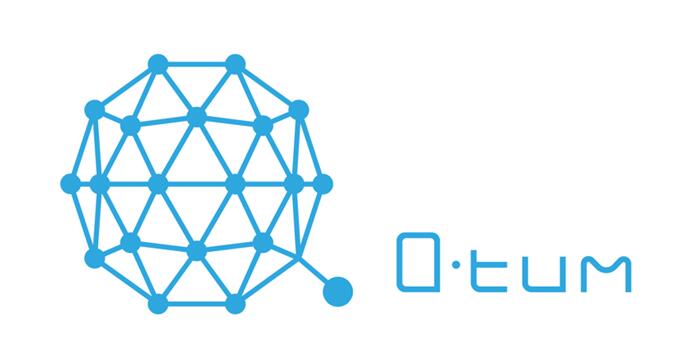The Qtum Leap: Driving Smart Contracts to Mainstream Business
Ever since an anonymous group of developers published the groundbreaking White Paper in 2009, titled “A Peer-to-Peer Electronic Cash System” - Bitcoin, the open source system it introduced, kept on delivering its promises uninterrupted.

The reliability of the network, described by the bitcoin pioneers in a clear and short document of merely nine pages, is truly unprecedented and adequately reflected in the (somewhat unbelievable) 15 billion USD market capitalization of the bitcoin ecosystem it initiated.
The blockchain, the technology underlying this achievement, was originally introduced to solve the “double spending problem” in peer-to-peer digital currency systems. However, soon enough it became self-evident that blockchain technology was capable of facilitating much more than allowing individuals to exchange “electronic cash” without having to rely on banks, clearing houses or any other intermediary.
In 2013, a young cryptocurrency researcher named Vitalik Buterin, only 19 at the time, proposed a scheme to generalize bitcoin’s decentralized exchange model, so it could execute far more complicated transactions, which could be tied to binary conditions. For instance: if, and only if, a set of conditions is met (like a product delivered, a service provided, etc.), then a payment should be triggered automatically and irreversibly. This re-introduced the idea of self-executing smart contracts into blockchain discourse - allowing anonymous parties to engage in direct exchange without the backing of lawyers, court orders or the police, taking the idea of intermediary-less p2p commerce to a whole new level.
Buterin and his colleagues proposed to generalize this concept of smart contracts even further, exceeding the purely economic realm of economics, and heralding a new age of decentralized computation. Since smart contracts operate on a binary if-this-then-that basis, Buterin suggested that they could serve as the basis of a decentralized programming language, able to code any application, without it having to be deployed on a centralized server. With this understanding, the Ethereum Project was born.
However, these new exciting abilities came at a price: in order to sustain the complexity of the new smart contracting platform, bitcoin’s elegant and rock solid transaction model had to be modified to the degree that interacting with the ethereum blockchain became a complicated and heavy-duty operation. While bitcoin has been running for almost a decade on, more or less, the same code, and has sparked since then numerous light-weight, mobile applications, and gateways; ethereum - with all its potential - remained a niche work-in-progress, not very well suited for massive mainstream adoption.
Preparing for a Qtum Leap
Understanding both - the enormous potential of ethereum’s decentralized computation platform, as well the importance of bitcoin’s ingenious simplicity - the Qtum team has designed a system which combines the most valuable assets of both projects.
Building on bitcoins reliable and proven-to-deliver blockchain, Qtum stacks a communication layer, allowing it to seamlessly interact with an enhanced version of the Ethereum Virtual Machine (EVM) called the Qtum Virtual Machine (QVM). With this innovation it is now possible to execute smart contracts and run decentralized applications, simply and securely, in environments that were previously out of reach for ethereum, combining the endless possibilities provided by smart contracts with the stability and maturity of the bitcoin ecosystem.
Going Mobile
One of the main advantages of bitcoin’s unspent transaction output (UTXO) model is its ability to sustain lite wallets. Lite wallets allow users to interact with the bitcoin network without having to download and sync with the entire blockchain. Instead, lite wallets use the Simplified Payment Verification (SPV) protocol, which only requires wallets to download a small part of the blockchain, while ensuring that they only receive transactions which are necessary and relevant to operate.
On ethereum, however, the entire blockchain needs to be processed to interact with the network. Therefore, if one is interested in using an ethereum-powered application, or communicating with a smart contract, one first has to download and sync the entire ethereumblockchain, which to date weighs up to 50 GB and has a monthly growth rate of 1-5 GB, depending on the ethereum client.
This state of affairs made it impossible to envision a mobile future for fully decentralized applications. Until now, that is. Qtum, based on bitcoin’s UTXO transaction model, allows applications and devices to interact with the Qtumblockchain with a lite wallet, while still being able to process smart contracts on Qtum’s Virtual Machine.
With this, it is finally possible to execute any smart contract on your mobile phone or tablet, as easily, fast and securely as sending a simple transaction from your mobile wallet. With about a half of all internet traffic to major sites being generated by mobile devices, this ability is mandatory if we want to see the massive adoption of decentralized applications (DApps), smart contracts and a p2p economy.
A Blockchain Powered Internet of Things
A smart contract fueled Internet of Things has always been among the primary goals of the decentralization movement, and rightly so. Imagine an apartment door that unlocks automatically if and when the owner receives the due payment or a rental car that can be picked up by whoever paid the fee, without having to sign forms or leave a security in escrow. Any given device could be locked or unlocked for predetermined periods, according to a smart contract where all parties agree upon in advance.
Envisioning such a decentralized sharing economy becomes much easier with Qtum’s lite wallet functionality. Instead of forcing each and every device, connected to the IoT, to act as a full node, smart devices could easily sync with the blockchain using a small amount bandwidth and storage, allowing for a much more agile and efficient network.
Scalability, Speed, and Efficiency
Both, ethereum and bitcoin, are based on a similar consensus scheme to ensure the coherence and security of their blockchain. Consensus in this respect means that all nodes in the network compare their results, so to speak, to make sure that only entries everybody agrees upon are recorded on the blockchain. There are several ways to reach consensus; the classic bitcoin/ethereum method is called Proof-of-Work (PoW) mining, which functions by agreeing that the most accurate chain of blocks is the one associated with the most work, or computational tasks, behind it. Mining makes attacks very costly due to arduous, and otherwise useless, computations demanded from miners participating in the block-verification game.
Mining is very wasteful, in both terms of energy consumption and time. Essentially, millions of devices are performing non-functional operations for the sole purpose of rendering attacks on the network expensive.
Qtum is among the first fully decentralized and Turing-complete blockchains to utilize an attractive and much more energy-efficient method to maintain coherence with a Proof-of-Stake (PoS) consensus algorithm. In a PoS environment, nodes have to pose a staking fee to participate in the validation game, which is automatically foreclosed upon if the node is shown to operate with malicious intents, hence rendering attacks costly and inefficient, without having to waste precious computational resources.
Further increasing speed and efficiency, bitcoin’s UTXO transaction model, implemented on Qtum, allows the network to process several transactions in parallel and in any given order. This is in stark contrast to ethereum’s architecture, which demands all transactions to be processed one at a time, in chronological order - making it so that at any given moment all nodes connected to the ethereum network process only one single transaction, while all other transactions have to wait in line.
Compatibility across the board
Utilizing an enhanced EVM analog, the Qtumblockchain is compatible with existing ethereum-based smart contracts. Ethereum contracts can be ported to Qtum with little to no change to their code and execute as expected. Furthermore, Qtum implements complete backwards compatibility, meaning that once a decentralized application or contract is deployed on the Qtum network, they will stay operational, even if the system is updated. With this, Qtum solves a huge problem, very well known to ethereum developers, who very often find their applications rendered useless by recurring changes to the ethereum network.
The bitcoin-based UTXO transaction model also ensures that Qtum will be mostly compatible with the existing bitcoin ecosystem, allowing Qtum users to benefit from the industry’s top-notch innovations, fueled by hundreds of millions of dollars already invested in the space. For example, if a payment gateway accepts bitcoin today, it already holds the potential to support Qtum transactions easily and link to Qtum’s API, without any significant modifications to their operation.
Bridging the Gap between Blockchains and the Business World
Despite their great potential, businesses, governments, and other legacy organizations still struggle with implementing blockchain-based solutions. These groups, in large part, aren’t using blockchain smart contracts because they operate in an isolated blockchain environment. In this respect, the greatest advantage of smart contract based commerce is also its biggest impairment.
To circumvent these technical and legal hurdles, and to unleash the full potential of the blockchain, Qtum introduces the Master Contract concept. Master Contracts allow DApps and smart contracts to trigger real-world, off-chain data inputs, auditable by a verified Oracle or the contracts mediator - while the contracts essential elements, such as participants and authorization structures, are secured on the blockchain itself.
This allows blockchain-based commerce to adhere to changing commercial rules and regulations, while interfacing with real-time data inputs from stock markets, weather forecasts, news agencies, etc..
Cooperating with a series of partners and third parties, Qtum aims to establish a smart contract hub, offering secure and thoroughly tested contract templates, tailor fitted for a multitude of industries and use cases, such as supply chain management, telecommunications, IoT, social networking, and more. With this, it will be easier than ever for established sectors and legacy institutions to interface with blockchain technology and enjoy their benefits
Conclusion
Smart contracts and DApps hold great potential for the future of both - the emerging p2p economy and the Internet sustaining it; but for them to reach mainstream adoption, decentralized applications have to be accessible, easy to use and operational on all major platforms used by the end consumer.
With this in mind, the Qtum team is building on well-established technologies like the bitcoin network, as well as on state of the art innovations, to produce a blockchain compatible with the major existing ecosystems, as well as cutting-edge capabilities these are lacking. Join us for a Qtum leap towards the future of mobile smart contracts and the mainstream adoption of decentralized applications.
 English
English
 Chinese
Chinese










Please sign in first